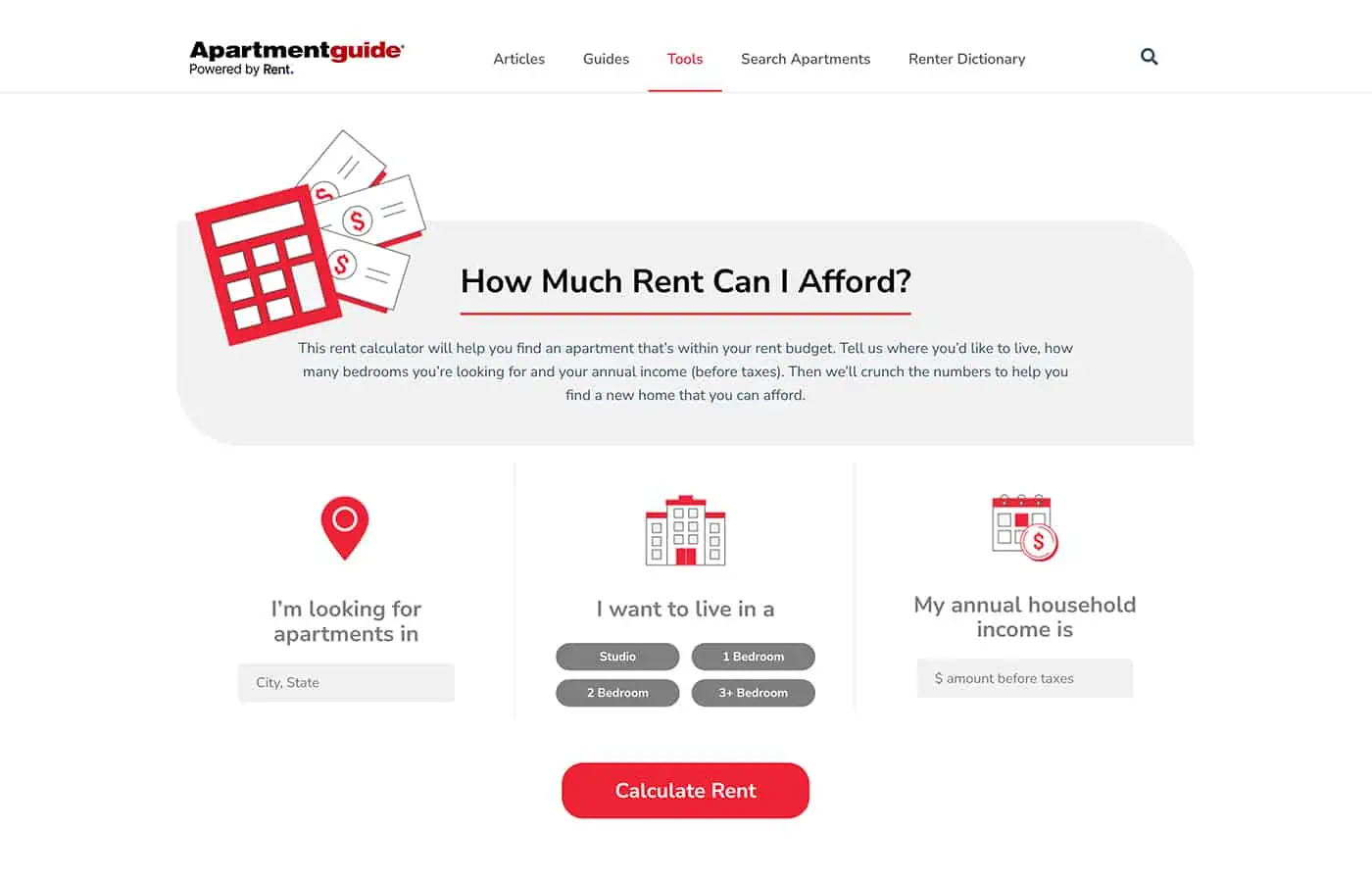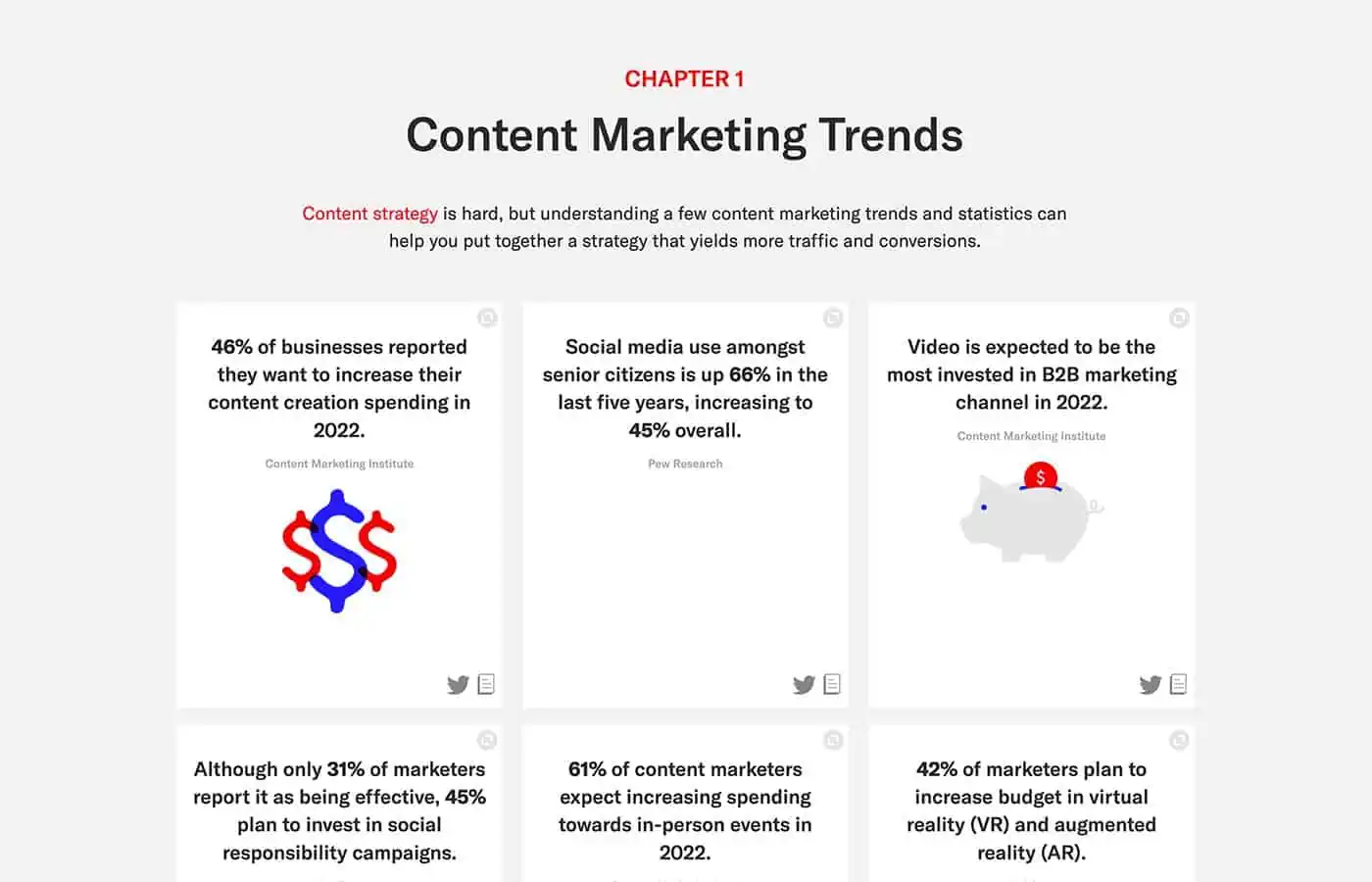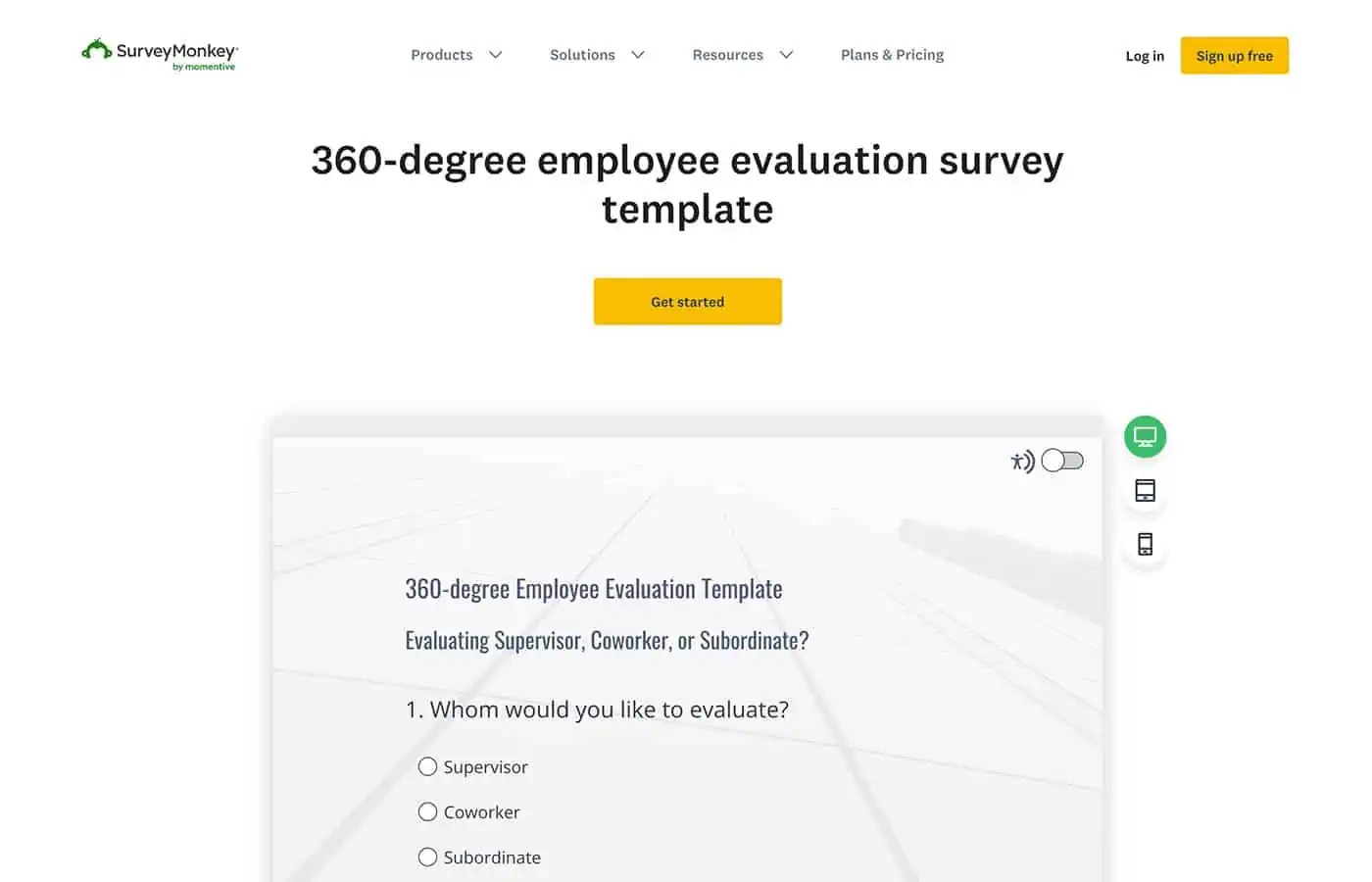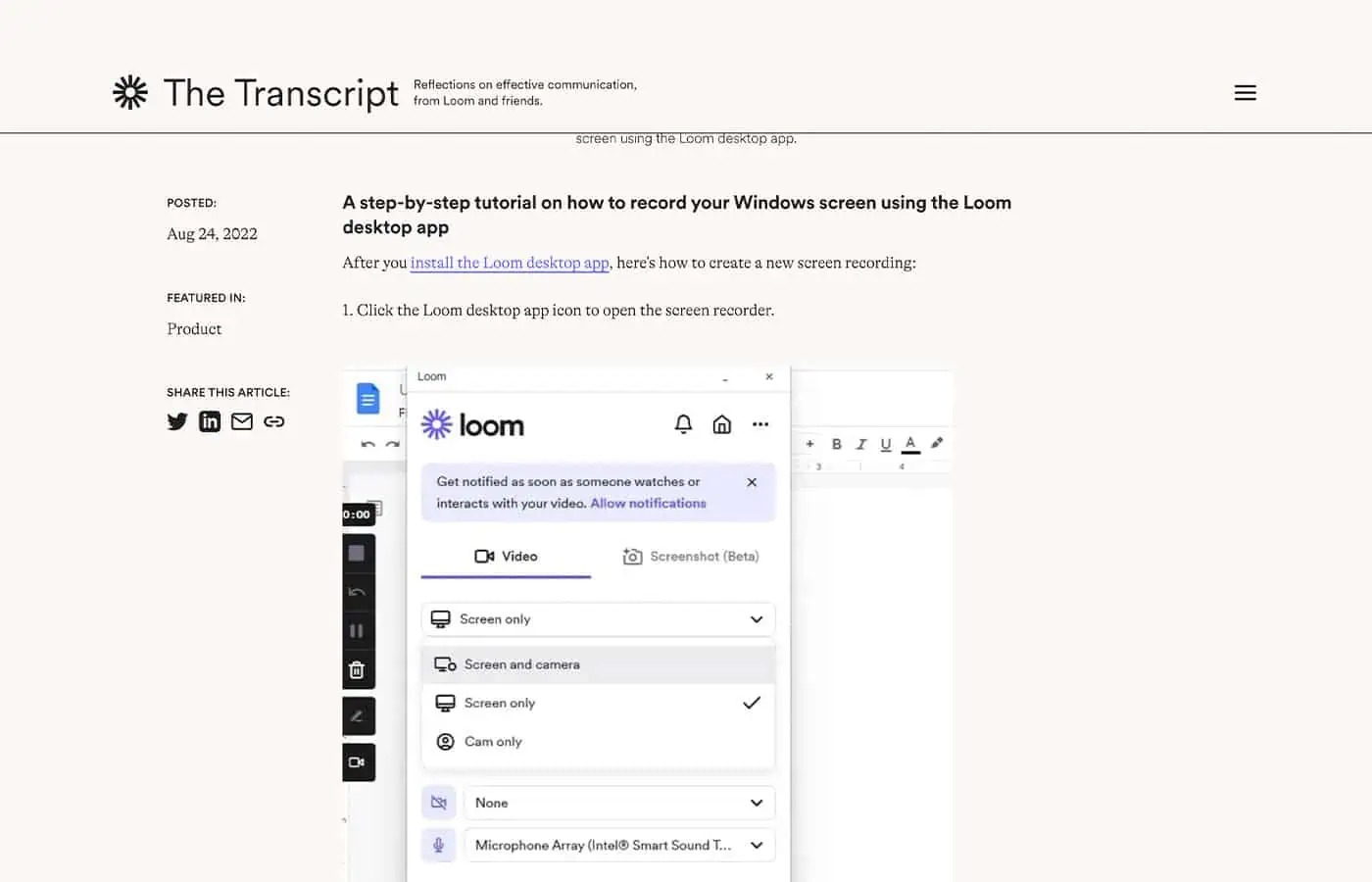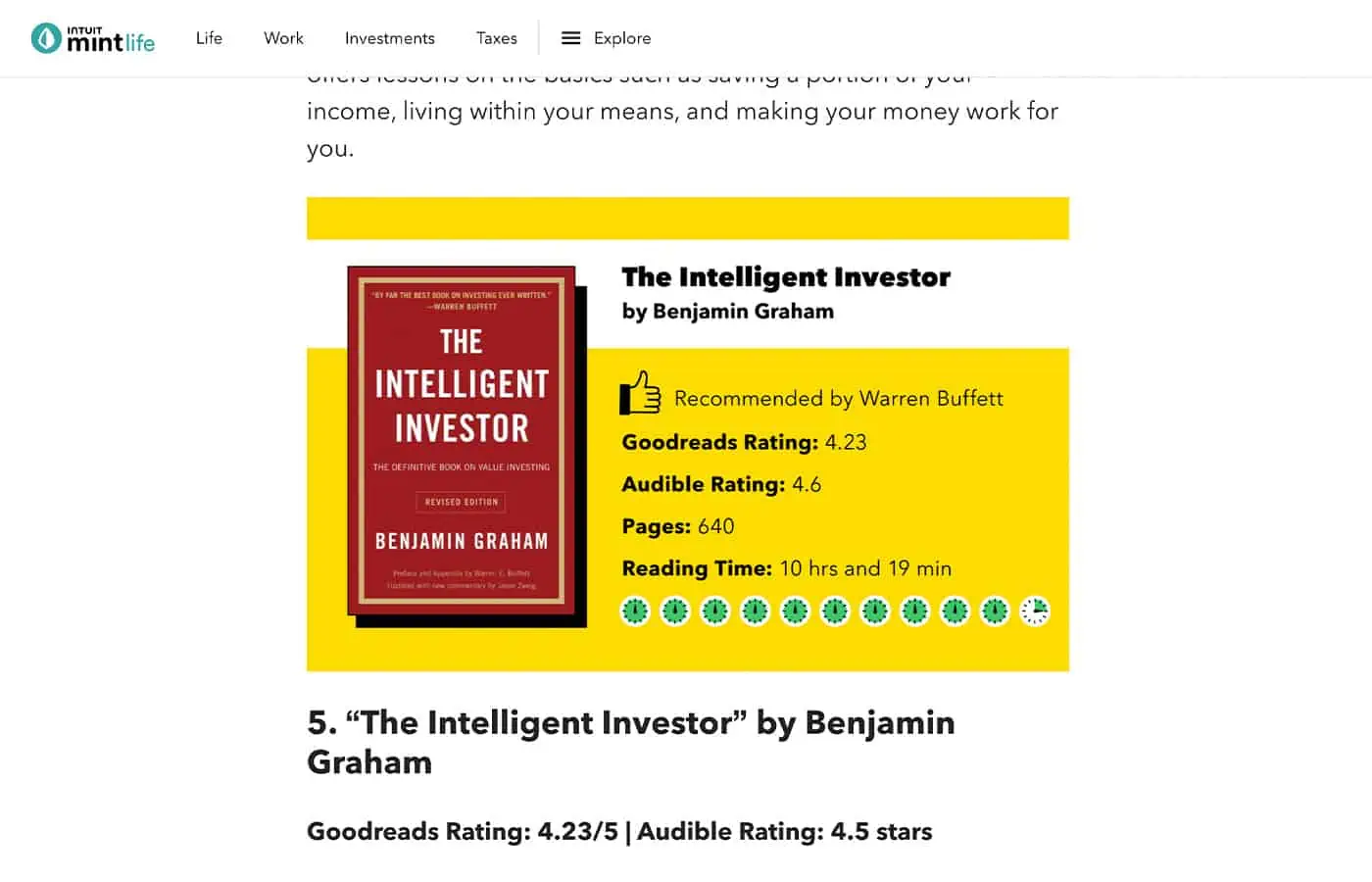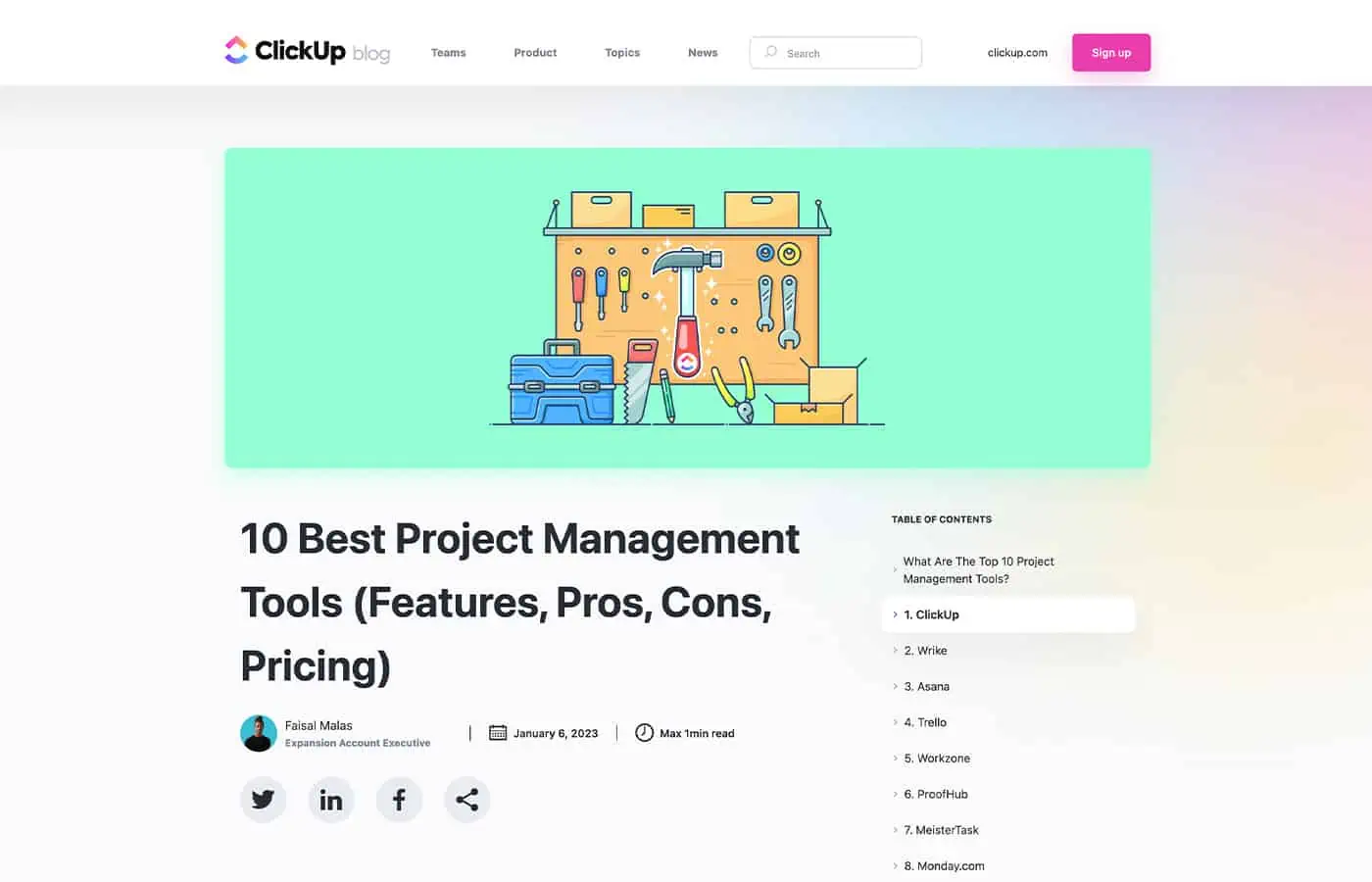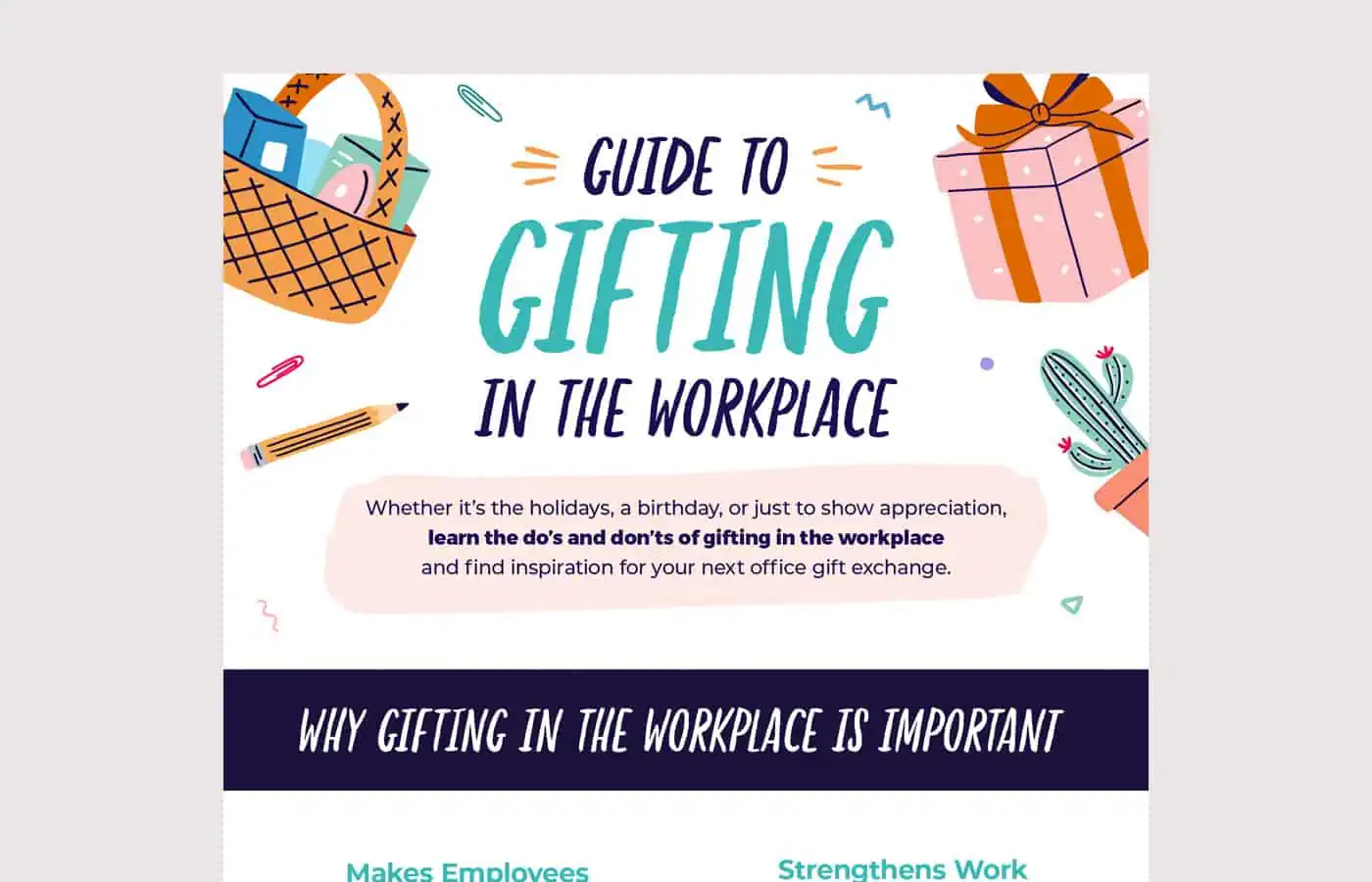Blogging is one of the most effective ways to connect your business with a larger audience, gain their trust, and eventually convert them to customers. The key is to have consistent, engaging content.
Why should your business have a blog? To start, companies that prioritize marketing (such as blogging) are 3 times more likely to see positive ROI. Blogs increase organic traffic and SERP visibility of your website — the more you post, the more your audience will engage with you.
Just like new businesses need publicity, blogs serve as the “consistent promotion” that helps build buzz around your brand. Those who visit it enjoy what they read, come back for more, and even encourage their friends to check it out.
Here at Siege Media, we know the secret sauce of what makes a good blog post. Having developed content for all kinds of businesses, our content accounts for approximately $7,238,000 per month in client traffic value (that’s $86,856,000 per year).
We understand that content creation can be a time-consuming process, no matter if you’re a startup or enterprise-level business. To help take that task off your plate, here are 82 business blog ideas to attract and convert customers throughout the new year.
- Educational Posts
- Company-Focused Stories
- Promotional Blog Ideas
- Roundup Topics
- News-Worthy Article Ideas
- Fun Blog Post Ideas
Educational Posts
Creating educational content is a crucial step in the buyer’s journey, letting you meet customers at any stage of the decision process. These types of posts help your audience feel more informed and confident about investing in your product or service.
1. Answer a Common Problem in Your Industry
In this digital age, the internet is the go-to resource for immediate solutions. As a company, make it a goal to answer common problems in your industry. Doing so will help boost your brand awareness and organic website traffic, two of many benefits when writing with SEO is top of mind.
2. Make a “This vs. That” Comparison
Create a helpful comparison post of your product with that of a competitor, educating your audience on the differences and how yours in particular may better align with their needs.
3. Feature Guest Posts From Industry Experts
Inviting an industry expert to share tips and insight on your blog is an excellent way to build credibility in your industry and increase brand awareness. For example, your guest contributor may share the post across their social platforms, helping drive more traffic to your site. It’s a win-win.
4. Curate Data-Driven Tips
Tips backed by statistics or survey data carry more leverage than those without. You can even use unique visuals such as animated infographics to tell a data-driven story.
5. Explain Industry Mistakes
Break down common mistakes and things to avoid in your industry or niche for your readers. Not only does this type of insight show them your expertise on the subject, but it also allows you to create a “click-baity” blog title to attract readers. Any time a topic opposes popular opinion, it will catch the audience’s eye.
6. Design a Helpful Interactive
Source: Apartment Guide
Using interactive content like calculators, quizzes, and flowcharts can boost visual interest on a standard blog post. While these require extra design and development resources, they can help better optimize your content to rank for a competitive keyword due to its unique and evergreen value add.
7. Create a Guide
Guides are a great way to share extensive information in a digestible way (while also flexing your expertise on the subject). These are generally long-form posts while being engaging and valuable for your target audience.
Source: Alan’s Factory Outlet
8. Write a “How To” Tutorial
A how-to post is one of the more popular ideas for blogs since you can align them with top search queries. You can use how-to posts for any industry to provide answers to readers’ problems.
Here are some examples:
- Finance: 44 Ways To Make Money at Home in 2022
- Cybersecurity: How To Make Your Phone Impossible to Track
- Digital Marketing: How To Use Google Images To Rank Better
9. List Industry Need-To-Knows
Name a few tools, stats, or hacks that you’d highly recommend people in your industry should know. Sharing helpful insights and resources like this can build trust and credibility of your brand.
10. Run a Survey
A clever way to gauge public opinions and uncover market insights is through a survey. By crafting thought-provoking questions, you can extract surprising and news-worthy results that draw attention (and eventually links) from high-end media outlets.
11. Create a Cheat Sheet
Share a few quick reference notes that your potential customers can use or apply to your product or service. You can even summarize the tips and tricks into downloadable templates that can serve as a shareable element.
12. Debunk Industry Myths
Shed light on areas within your industry that are confusing or misunderstood by many consumers. Unraveling misconceptions will both engage your audience and show expertise in your niche.
13. Share Interesting Industry Statistics
Source: Siege Media
Statistics posts provide reporters and writers with supporting data, who in return cite your post as the resource. This makes statistical pieces strong candidates for passive link acquisition, which helps boost your site’s authority.
Looking to add even more value to your statistics post? Consider creating a downloadable report for your audience to keep long after they leave your site.
For example, check out Siege Media’s Content Marketing Trends Report post, which features both statistical insights and data visualizations.
14. Provide a Glossary
With a glossary, you’ll have a source that your intended audience can return to often. This is useful if your industry is new or known for having unique terminology. Below are a few examples:
- 98 Crypto Terms You Need to Know Now
- First-Time Home Buyer’s Glossary
- 73 Real Estate Terms to Know in 2022
15. Highlight Underrated Strategies
Teach your audience some of the most overlooked yet effective methods and strategies to be successful in your niche. Providing unique and valuable insight for your readers can build their trust and help you stand out from competitors.
16. Share Top Influencers in Your Industry
Create a post that names the most influential and successful leaders that you follow in the industry and why people should know about them. To return the favor, they may also provide exposure to your business.
17. Provide helpful templates
Solidify your business as a resource. Offer visual examples, such as blog post templates on specific subjects within your niche. Then, walk your audience through the process step by step.
18. Create a List of Resources
Share several links that your audience can use as credible sources when learning about your industry, such as science-backed facts or statistical evidence to support your point.
19. Answer Correlation Questions
How does “X” cause “Y”? Solutions to causation questions are great strategies to better educate potential customers, especially those in the health and wellness industries.
20. Create a Timeline of Your Industry
How has your particular industry changed over the past few decades? Engage your blog readers with a story timeline, highlighting major historical events that influenced how your company does business.
21. Transcribe a Video Tutorial
Source: Your Best Digs
Resurfacing the cross-promotional strategy, you can repurpose a video tutorial transcription into a new blog post. While videos are an effective way to educate your customers about a new product or service, transcriptions can make your content more accessible and better optimize it for search engines (Hey, Google!).
22. Explain Ideal Buyer Personas
Source: HubSpot
Break down the type of people who mostly use and benefit from your products and services, explaining why certain demographics gravitate toward your offerings.
Company-Focused Stories
Your blog is also an opportunity to showcase company culture. Use it as a “show and tell” to potential applicants.
23. Tell Your Brand’s Origin Story
How did your company begin? This post by Main Street Forge does an excellent job of guiding the reader through their humble beginnings, including their product conception, mission, and how they support the community. Customers appreciate a company that feels more human.
24. Explain Recovery From a Business Failure
Nearly 20% of U.S. businesses fail within the first year. If your business was able to recuperate from great loss, consider sharing how you all did it. Everyone loves a comeback story.
25. Highlight Yearly Achievements
If you’ve hit your company goals for the year, show them off! Displaying your achievements will show potential clients what you can do for them and how your service stands out from the competition.
26. Do a “Meet the Staff” Post
Speaking of future clients, you can create a blog post that introduces them to your staff. This way, you can casually highlight your team’s skill sets as well as their personalities.
27. Share a Company Update
Many businesses transitioned to fully remote teams during the pandemic. These major updates and changes in the company are definitely worth sharing on a blog for future clients and employees to learn.
28. Outline Career Roles
What do you look for in a quality team member? Craft the perfect description as a blog post. For example, we created a post explaining the ins and outs of our content marketing roles in depth. Emphasis your expectations and highlight how your company stands out from other employers.
29. Make a “Day-in-the-Life” Post
What is it like to work for your company? Engage curious minds with a post walking them through a complete work day in your office or certain positions.
30. Do a Webinar Q&A
Speaking of webinars, recap the Q&A session from it as a blog post. Doing this allows you to strategically drive traffic to your site, targeting and answering common search queries within your industry.
Source: Clearscope
31. Walk Through Your Interview Process
Use a blog post as a creative way to share your company’s interviewing procedure, explaining the hiring process and next steps. Not only does it show your transparency, but can also help interested candidates determine whether they’re a good fit beforehand.
32. Share Your Core Values
With interviews in mind, a blog post is also a way to communicate your company’s core values with potential candidates. For example, you can highlight your office’s open door policy or advocacy of diversity.
33. Have an Employee Spotlight
Employees are a company’s most valuable assets. Blogging about them is an admirable way to show your team members your appreciation. Share highlights of their achievements in a post, such as client wins and promotions.
34. Share Ways You Give Back
With so much uncertainty going on in the world, many readers look forward to resharing uplifting posts that promote positivity. Use a blog post to demonstrate the different ways you’re giving back to the community, like proceeds to a cause or participation in volunteer work.
35. Run an Employee Survey or Poll
Source: SurveyMonkey
A survey is a helpful way to encourage upward feedback in the workplace. Consider sharing the internal processes in a blog post to demonstrate transparency of your organization with both potential clients and future employees.
36. Share Your Lessons as a Business
What did you learn in the past year while scaling your business? Create a post sharing those insights with your audience, such as sales hacks, recruiting tips, and employee retention strategies.
Promotional Blog Ideas
If you offer SaaS or B2B services, business blog posts are also an effective way to spread the word of your new product to readers and how it’ll benefit them. These types of posts are more bottom funnel, helping convert your audience into customers.
37. Showcase a New Product
If you’ve recently released or upgraded a product, let your audience know. For example, in their “What’s New at Ahrefs” post, Ahrefs introduced several new features to their SEO reporting tools, how they work, and where users can find them.
38. Give a Sneak Peek of Your Webinar
Build up the momentum of your upcoming webinar with enticing breadcrumbs before the date. You can write blog posts on topics that compliment the webinar, all of which include a link to your webinar’s registration landing page.
39. Share Your Product Reviews
Did you know that 93% of customers read online reviews before purchasing a product? Positive online reviews can serve as social proof your company needs to build trust and credibility with prospective customers.
40. Answer FAQs for Your Products
Sometimes, answering a customer’s question requires in-depth explanations that are too long for traditional FAQ pages. To solve this, you can answer those types of customer questions in detail as a blog post. There’s most likely also search volume behind those queries.
41. Split an eBook Into a Blog Post Series
New content doesn’t always have to start from scratch. Repurposing an eBook is an easy way to add fresh content when you’re short on time or low on resources.
42. Perform a Case Study
A great way to display your product and client success is through case studies. These types of posts are data-driven reports where you can use graphs, statistics, and other creative visualizations of the results. They also give potential clients a reason to consider hiring your company.
43. Recap Your Recent Podcast Episode
According to a Statista, an estimated 120 million people listen to podcasts each month. That said, nearly 50% of bloggers say their biggest challenge is getting traffic. Thankfully, cross-promotion of the content can strategically grow an audience for both platforms.
Create a blog post that recaps your recent podcast episode and include keywords to increase its search volume and drive more people to your content.
44. Explain How To Use Your Product
For more complex products like integration tools, a comprehensive how-to guide can help potential customers feel more confident in using it. Loom, a video messaging software, has a blog post sharing a step-by-step tutorial of their app.
Source: Loom
45. Share Customer Testimonials
If you receive a lot of positive feedback from your clients or customers, consider sharing them. Just be sure to ask their permission beforehand. Superb testimonials serve as good PR for your products or services, and also help build trust in your brand.
46. Promote Your Latest Video
Promoting your latest video on a relatable blog post can help make it more engaging and digestible. Not only that, but video content has the ability to rank on search engines and help generate more views and conversion. A surprising 84% of people admit to buying a product or service after watching one.
47. Summarize Your eBook
Since eBooks are longform products, blog posts are a great way to promote them in a more digestible format. An excellent example is this post by Codewithwp, where they successfully ranked for the competitive keyword, “how to start a blog,” through their eBook promotion.
48. Talk About Your E-course
If you’ve recently launched an online course, use your blog post to promote it. The best thing about blogs is that they can work as “previews” to your e-courses and let you showcase your expertise in the subject.
49. Explain the Benefits of Your Offerings
What makes your products or services unique? In a world where the internet plays a consumer’s decision making, a blog post is a strategic way to convince potential buyers how your offerings address their needs and serve as solutions to their problems.
50. Tips and Tricks for Your Products
Are there any new or creative ways customers can use your product? Share a few tips and hacks users can apply. Providing customers with product knowledge and insights can help establish trust between customers and your business, thus increasing the chance they’ll purchase from you again.
51. Share the Story Behind Your Product
Another way to build customer trust is through storytelling. People connect with the stories behind products, especially those that relate to their own personal experiences and views.
Sara Blakely, founder and CEO of SPANX, made it known that her now billion-dollar shapewear brand initially began as a creative alternative to pantyhose.
Roundup Topics
Use roundups to showcase a variety of tips and solutions within one niche. These types of posts can cover wide-range of topics, allowing you to engage different target audiences.
52. Display Your Favorite Examples of Work
From the best infographics to stunning photography portfolios, walk readers through examples of work you deem most impressive and why. Doing so can highlight your knowledge of the industry and serve as inspiration.
53. List the Youngest CEOs in Your Industry
Appeal to the millennial and GenZ audience by creating your own version of Forbes “30 Under 30.” You can list young business owners who’ve made a name for themselves in your industry, summarizing their success stories and what readers can learn from them.
54. Name the Best Digital Platforms
Digital platforms—social media, forums, podcasts, etc.—not only influence how we shop, but also how we work. Consider writing a post that explains which platforms are best for their business and why.
55. List Your Most Recommended Books
Source: Mint
With resources in mind, book recommendations and reading lists are enticing blog posts for bookworms. Avid learners will be interested in reading a list of essential books to read about your niche.
56. List the Top Worst Choices
Drawing inspiration from the above idea, shift focus to those low-performing businesses and identify what went wrong. Commentary content will stand out amongst other listicles.
57. Compile the Best Online Resources
Think about any tools and resources you’ve utilized that would greatly benefit your readers. Share your recommendations and explain how these tools can be assets to your particular industry.
58. Rank Industry Trends of the Year
What trends in your industry can your audience learn to set them up for success? List them out and do an in-depth analysis of the successful businesses that use them compared to those that don’t.
59. Share Your Top Client Wins of the Year
Achievements such as client retention and goals achieved can serve as goals for other startups, not to mention intriguing to potential clients.
60. Highlight Quotes from Top Industry Experts
Every business owner could use encouragement from time to time. Think of industry leaders who most inspired you during your career journey and share their most memorable quotes with your audience.
61. Rank Products of Competitors
Sharing thoughts of competitors doesn’t automatically put you in the hot seat. For example, a thoughtful analysis of products—like comparison posts and “best for” suggestions—can be impartial and highlight your expertise in the subject matter.
Source: ClickUp
News-Worthy Article Ideas
Well-pitched, timely, and data-driven content can help generate links to your blog from journalists and high-end news outlets. Check out the following examples to learn more.
62. Provide Data-backed Facts
When covering business trends and relatable news, credibility is a must for news outlets. In this case, offer content with data-backed facts, including studies and statistical research.
63. Announce Your Brand Sponsorship
Have you recently secured a product sponsorship with a celebrity or famous influencer? Announcing it can create some buzz about your brand amongst news outlets.
64. Create a Trends Report
Consider sharing your analysis and perspective on the outlook of your industry, including any noticeable trends or insightful discussions with experts.
65. Reveal Industry Secrets
Buzzwords like “secrets revealed” and “must-know hacks” are sure to catch an eye. Readers and journalists alike appreciate access to the latest news, research, and exclusive interviews.
66. Name Current Events Affecting Consumers
Identify major challenges or world events that have impacted your industry, and what businesses can do to rise above current setbacks.
67. Raise Awareness of a Cause
What causes do you or your business support? From health to social movements, a blog post about it can help educate your audience and encourage advocacy.
68. Interview an Influencer
Many people may not know about your business, but they more than likely follow social media influencers. For this reason, partnering with one that you follow can help you reach a wider audience and increase your brand awareness.
You can expect influencers to charge a good penny for their time, but the end result is usually high post engagement, shares, and product conversions.
69. Highlight Facts of an Issue
Statistical facts can help urge your audience to take action on a particular issue. This post from Columbia Climate School does this, highlighting several stats about plastic pollution in oceans as well as identifying solutions to help reduce it.
Fun Blog Post Ideas
Fun content makes your brand or company feel more human, which makes consumers feel more encouraged to buy from you.
70. Host a giveaway
Source: Zola
Offer to give one free product or gift every month to a random subscriber, encouraging more readership of your blog.
71. Recommend Local Things to Do
Share the best activities and go-to spots in your area, such as coffee shops and county fairs. Hyperlocal search queries—like “near me” terms—are especially helpful if your business is trade-related or a small brick-and-mortar shop. These posts can also give your company more exposure.
72. Tell a Story Using GIFs
Animated GIFs are attention-grabbing features on blogs and a great way to connect with millennial and Gen Z audiences. Combine several of them together with text to make a shareable story.
73. Host a Contest
Generate new readership and increase engagement by hosting a contest on your blog, such as sweepstakes or creative challenges.
74. Compile the Best Jokes About Your Niche
Entertain your readers with a few quirky sayings or jokes around your industry. Infusing your content with a pinch of humor can keep it engaging and relatable.
75. Create an Engaging Infographic
You can take a break from text-heavy posts by adding in an infographic. It’s a great way to simplify a complex idea while still impressing readers with art.
Source: BigRentz
76. List Fun Team-Building Activities
Share ideas of team-building exercises you’ve organized in your workplace to improve communication and collaboration skills. These can range from contests to trivia games—and it’s a great way to show off your company’s culture.
77. Share Work-Life Balance Tips
Tips on how to improve work-life balance is a timely subject. In a 2021 survey by Indeed, more than 50% of people said they were feeling burned out at work.
78. Compare Your Niche to Pop Culture
Create a fun analogy between your business strategies and theme of a popular sitcom or song. For example, you could breakdown steps to writing the perfect cold email pitch to that of a comedian writing their best punchline.
79. Create a Playlist of Songs for the Work Day
Compile song recommendations from different members of your team into a playlist. You can share it internally to collaborate and then make a post to show how your team creates something fun together.
We had some fun with this ourselves and added a “Siege’s Spotify Wrapped” to our post on content marketing examples.
80. List Favorite Memes of Your Industry
Many consumers appreciate a company or brand that can show a little personality through humor. Consider putting together a list of funny memes that align with your brand.
81. Start a Challenge
Create a challenge that your audience can participate in, such as a 21-day fitness or reading challenge.
82. Create a Gift Guide
Share gift ideas for your target audience to find for their loved ones. This is a great bottom-funnel post and gives you a chance to mention a few of your products and how they make the perfect gift.
Source: RedBubble
Looking for a Content Partner?
This jam-packed list of business blog ideas is sure to kick off your content strategy for the better and carry momentum through the year. The question is whether or not you have the time (or team) to do it effectively.
With a content creation agency, you’ll have a team of skilled copywriters and top-notch graphic designers in your corner. From researched-based copy to engaging visual content, our team can deliver consistent posts tailored to your audience.


